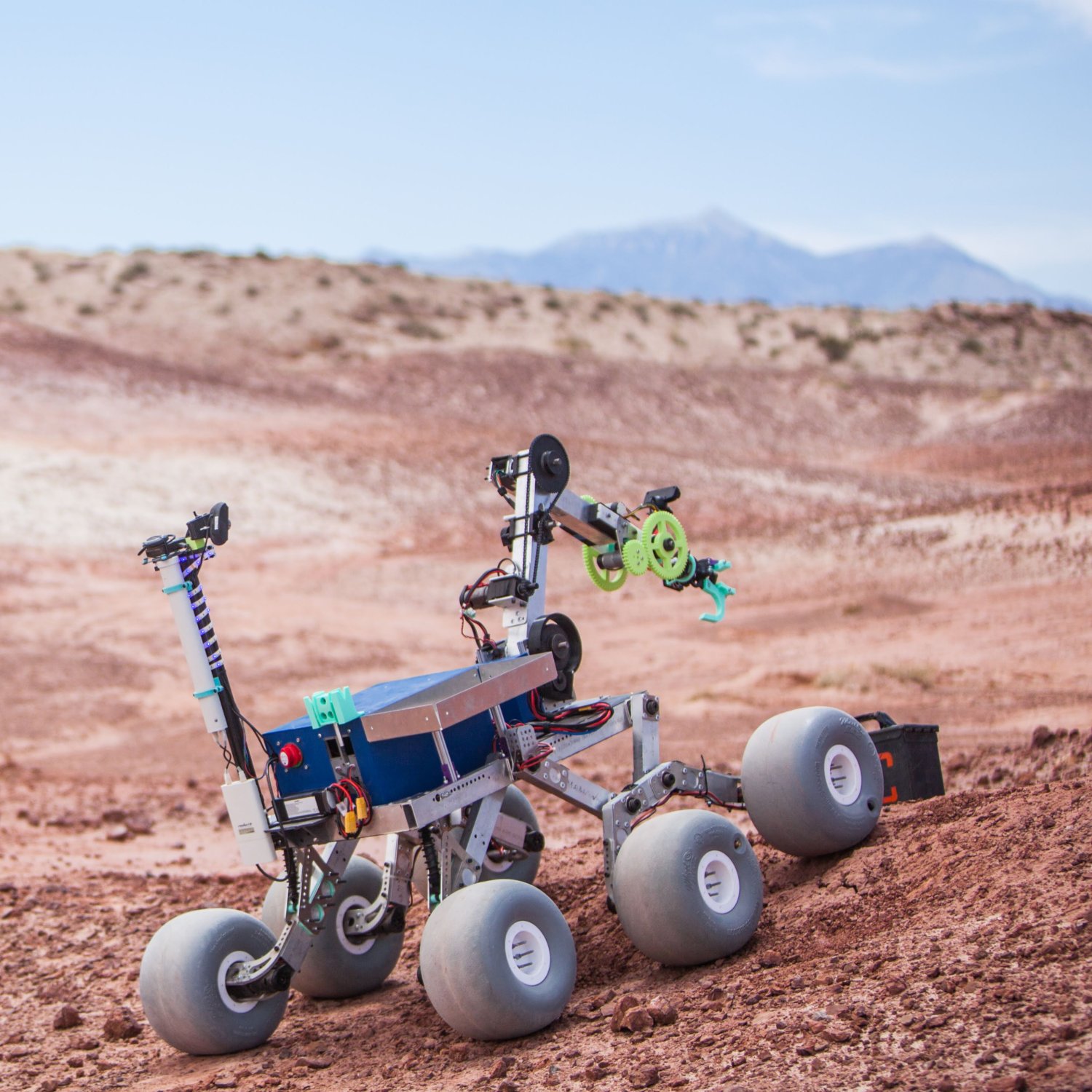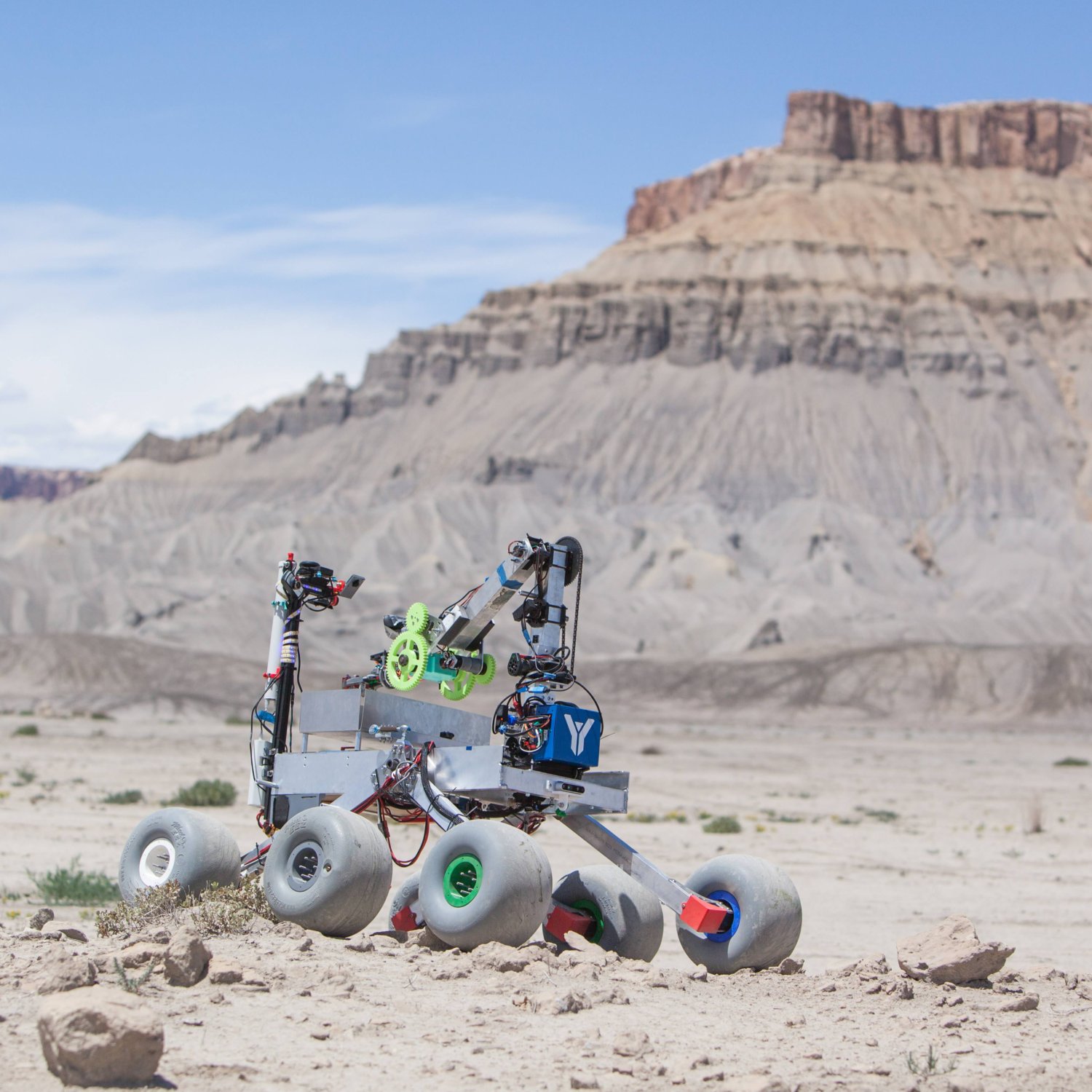yonder rover
I spent a lot of time during my undergrad at UCSD working on Yonder Dynamics, an engineering project team focusing on building a Mars Rover for the University Rover Challenge.
From a high level, these rovers are of a medium size (must fit in a 4" cube and weigh less than 110 lbs) and moderate budget (total price <$18k USD). The competition is only slightly modified every year, so the same rovers can be re-used/upgraded by teams year-to-year. There are two main stages to the competition. The first is the Systems Acceptance Review (SAR), a video submission due in early March. The 36 teams with the best SAR qualify for the main event in early June: the URC finals at the Mars Desert Research Station (MDRS) in Hanksville, Utah.
Hanksville has a population of just about 200, and is in one of the most remote regions of Utah. There is enough infrastructure nearby to eat, sleep, get gas, and not much else - as such, a huge component of the final competition is in the preparation before getting to Hanksville, in which you must try to minimize how many things are going to break, and ensure you’re bringing enough stuff to fix all the things that will inevitably break. The emphasis on preparation is even more extreme when you realize that you only have one chance to do each of the four ‘missions’ at the competition. If you get caught off guard, you will more than likely score 0 points on one or all of the missions (this happens for over a dozen of the 36 teams pretty much every year).
The two videos below are Yonder’s SAR submissions for the 2022 and 2023 URC seasons, and give a good high-level understanding of what we put together during these two years.





